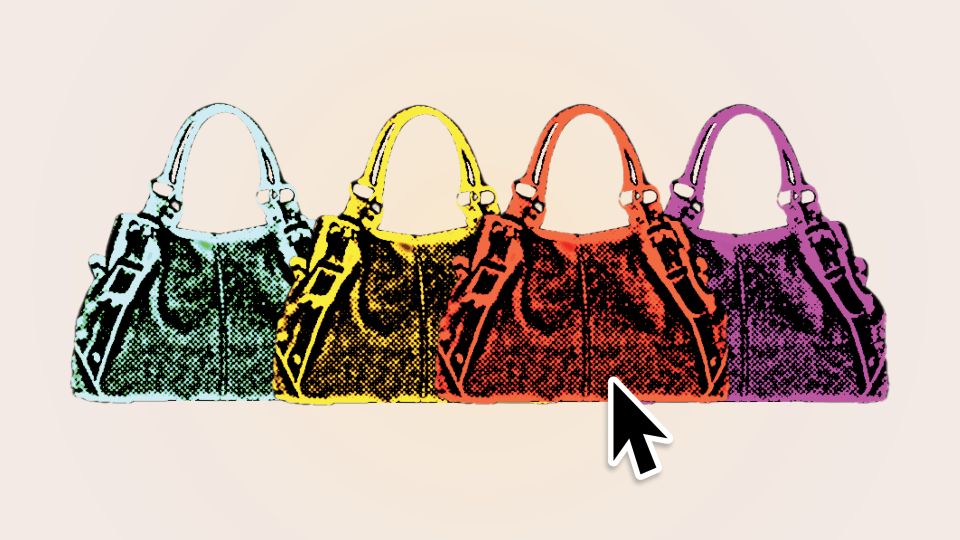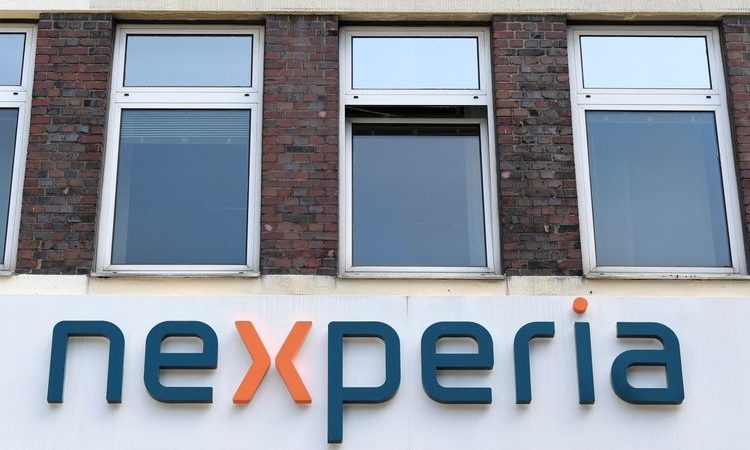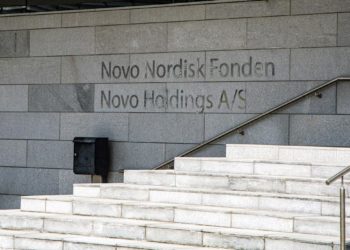Many people will have experienced the excitement of receiving an online order, or that hit of dopamine that follows a new purchase. But what happens when you unbox the goods, only to find that it wasn’t what you were expecting? Worse yet, when it turns out that you spent a significant sum on a product that could potentially be counterfeit?
That was the dilemma Joan Kim had to contend with. In a TikTok video uploaded in December 2024 that has since amassed over 1 million views, the Los Angeles-based content creator shared her frustration at “being scammed” by US luxury department store-chain Saks Fifth Avenue. “It’s the holidays and I wanted to buy a gift,” Kim said, gesturing to an ivory-colored leather bag on her shoulder. Priced at $2,600, it was a tote by The Row, the discreet, logo-free luxury label founded by actresses-turned-designers Mary-Kate and Ashley Olsen.
“I’ve been needing a bag and I wanted one that wasn’t so ‘loud,’” Kim told CNN over email. (As) I already had The Row bag in medium, I wanted to buy the bigger size in black.” And while she was initially delighted to receive her order, made online through Saks Fifth Avenue (a receipt of the purchase was viewed by CNN), that joy quickly faded as she noticed discrepancies between her new purchase and the same style she already owned.
Kim said that the dust bag it arrived in was a different color and fabric, its drawstring visibly thicker. The stitched-on rectangular logo, bearing the brand’s name, also looked dissimilar. “I had a feeling it was off,” said Kim, adding that when she opened the dust bag, what she found inside “was even weirder.” Looking at her cream bag, which she had purchased directly from The Row’s Melrose Place store, and the black version that had arrived from Saks, she observed multiple differences — from the material used in the lining to its shape when worn.
Convinced that the new bag was a fake, Kim was deeply disappointed. After all, Saks Global, which owns Saks Fifth Avenue as well as luxury stores Bergdorf Goodman and Neiman Marcus, is a respected entity, known for selling high-end brands including Prada, Gucci and Dolce & Gabbana. She contacted Saks’ customer service department, which asked her to return the product via post. But Kim wasn’t satisfied with the response. Her concern, she explained, was that she would have no physical evidence to prove her claim — and that she consequently wouldn’t receive a refund — if she wasn’t believed.
Ultimately, Kim took the bag to a Saks Fifth Avenue store in Beverly Hills and received a refund in gift card form, but the experience had left a sour taste in her mouth. “After the incident, I haven’t purchased anything online,” she told CNN, adding that in the future she would only shop for luxury goods in-person.
Saks confirmed to CNN that the incident had been resolved, but did not comment on whether the returned bag was counterfeit and what had happened to it.
“Return fraud has become a pervasive issue for retailers, and, as a result, we consistently evaluate our returns approach,” a global spokesperson for Saks said in an emailed statement. “As part of this, we’ve identified the need to take additional steps in our processes, including more time for careful product quality inspection and authentication, to ensure that customers receive high quality authentic merchandise in future orders.”
The spokesperson added: “Our fulfillment centers manage millions of shipments every year, but it is unacceptable for any customer to have this experience. Our top priority is ensuring our customers enjoy the luxury shopping experience for which Saks Fifth Avenue is known, and we continuously work to improve our processes.”
A global occurrence
Kim’s experience isn’t as unusual as you might think, with shoppers across the world reporting similar incidents. Tiffany Kim (no relation), a California-based dental hygienist, was also shocked to discover that a recent purchase — a top-handle bag, also by The Row — could potentially be counterfeit. She had bought it from Ssense, a Canadian online luxury retailer that stocks Bottega Veneta, Loewe and Auralee, among other fashionable labels.
When Kim received the bag in January, she had her suspicions, because the quality didn’t match her expectations. She ended up purchasing the same style directly from The Row. On placing the two bags side-by-side, they appeared distinctively different in size, shape and material. The product that had arrived from Ssense was also missing a warranty card. Kim was astonished. “This bag is not cheap; it’s about $1,000,” she said in a video shared with her 39,900 followers on Instagram.
Kim did not respond to requests for comment from CNN. On her video alleging that she received a fake product, Ssense commented that it had gotten in touch directly in hopes of resolving the issue. In a statement provided to CNN, Ssense did not comment on whether the bag that Kim received was counterfeit but said: “We are committed to ensuring the authenticity of all products sold. We have measures in place to prevent the sale of counterfeit items.” Ssense added that all returns undergo “thorough examination.”
British retailer Flannels, which sells high-end brands including Versace, Burberry and Moncler, has also been subject to complaints from multiple shoppers, who claim that their purchases, ranging from a Saint Laurent belt to pair of Gucci monogrammed sandals, are counterfeit. (The shoppers did not respond to requests for comment from CNN seeking to verify their purchases.)
Similar complaints have plagued Flannels for years: In 2018, the retailer was accused of selling fake products by disgruntled shoppers who had purchased Moncler items, after the Italian label said that their purchases were not genuine products. When approached by CNN, Flannels declined to comment on the allegations that the products they sold online were fake, and what it was doing to prevent potential fraudulent returns.
Cracks in the system
In a sector where trust and credibility are paramount to success, it’s unlikely that an established department store or multi-brand boutique — which tends to have longstanding relationships with luxury brands — would knowingly sell a counterfeit product.
Yet, as global supply chains increasingly diverge from traditional models, in response to inflationary pressures and geopolitical and economic changes, they’re getting more complex — and more challenging to police. It’s through these avenues that counterfeits may be slipping through, warned Simon Geale, executive vice president of procurement at Proxima, a supply chain firm owned by Bain & Company.
One method that fake products enter the retail system may be through fraudulent returns, in which a customer returns a completely different item while claiming they’re the original product, Geale told CNN over the phone. Processing returns is a complicated and costly process, and it is possible that some stores may not have the infrastructure in place to thoroughly inspect the returned items, he warned. “It’s rare, but the impact is substantial,” Geale said, noting financial loss and reputational damage.
Ona Simpson, a luxury supply chain consultant and the co-founder of Uncovered Agency, whose clients have included Burberry and Vivienne Westwood, asserts that big retailers are well equipped to handle returns, but the issue may be with the suppliers.
While the luxury industry has traditionally operated a wholesale model (high-end stores typically purchase and hold inventory from brands), a growing number of retailers, including Net-a-Porter and Nordstrom, have turned to e-concessions or drop-shipping, because it enables them to source high-end products while avoiding less upfront investment.
The danger is that stores have less oversight over where the product has come from, said Simpson. “As a customer you might go onto a website — let’s say Saks. You might buy a Prada bag thinking it’s coming from the Saks warehouse, but that might not be true.”
As to why a store might resort to such means, Simpson pointed to the exclusive nature of luxury goods, where scarcity is typically associated with desirability and value. Increasingly, to control their image and brand integrity, luxury brands have been limiting which distributors or stores can sell their products, as they instead prioritize direct retail channels (such as their own stores or e-commerce site). For example, Chanel notoriously does not sell its fashion and handbag collections online (those items can only be purchased in the brand’s physical boutiques).
That can make it difficult for retailers to keep up and cater to trendy customers who want the latest launch or the buzziest brand of the moment. “A lot of high-end retailers now (stock) products from independent boutiques and suppliers because they have found this to be a way to (sell) brands they want,” said Simpson. However, that puts the retailers at risk of receiving counterfeit products without realizing, she noted. “(Stores) are trying to keep customers happy, but (fraudsters) are taking advantage of that.”
Simpson’s hope is that the recent incidents will give stores a wakeup call to take greater preventative measures that protect their integrity, as well as seek greater differentiation at a time when retail has become increasingly homogenous. It’s a decision that would also benefit shoppers, who are now seemingly faced with the same choices everywhere they go, as stores stock the same fashion labels and products.
“There are increased counterfeits floating around, so every step of the way, there’s a greater chance of mistakes or fraud happening,” Simpson warned.
For more CNN news and newsletters create an account at CNN.com
The post She spent $2,600 on a designer bag from a trusted store. Was it a fake? appeared first on CNN.




